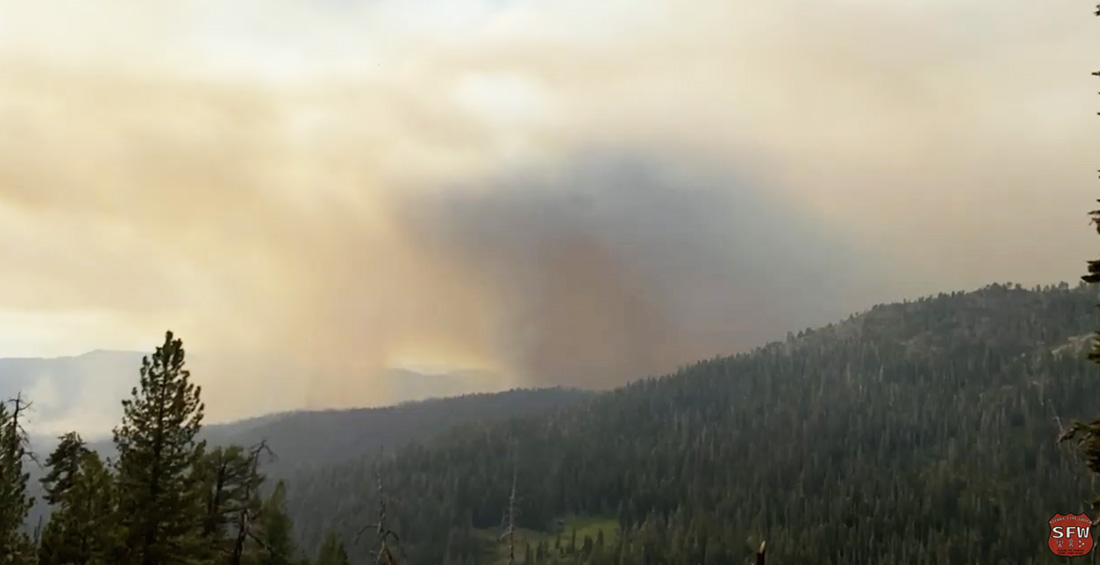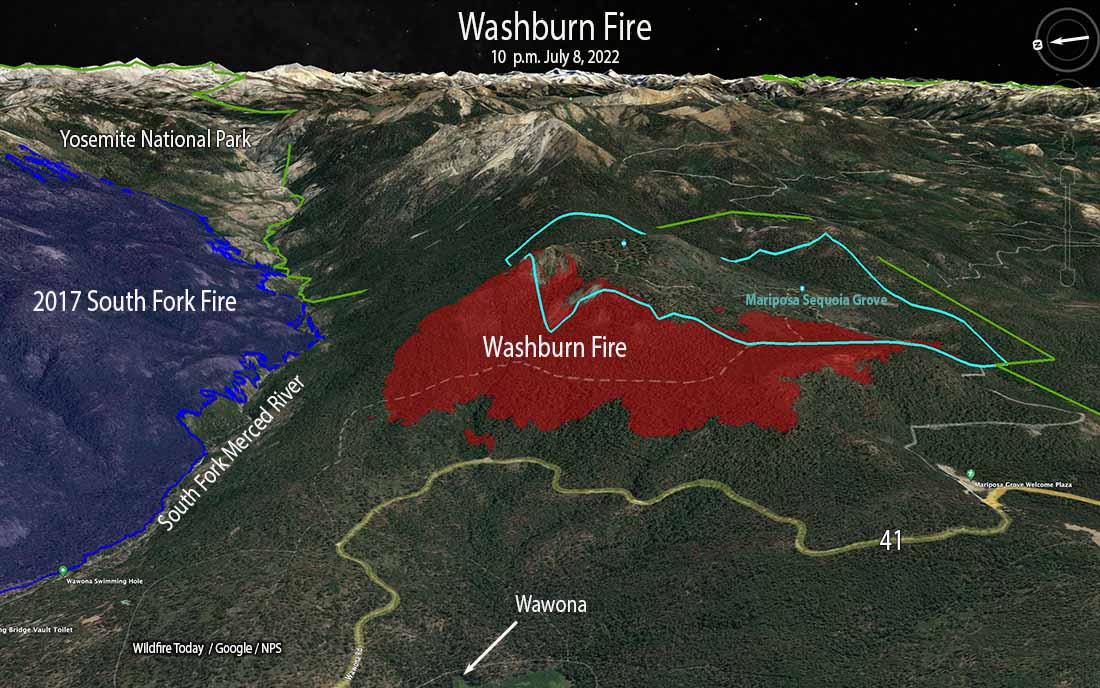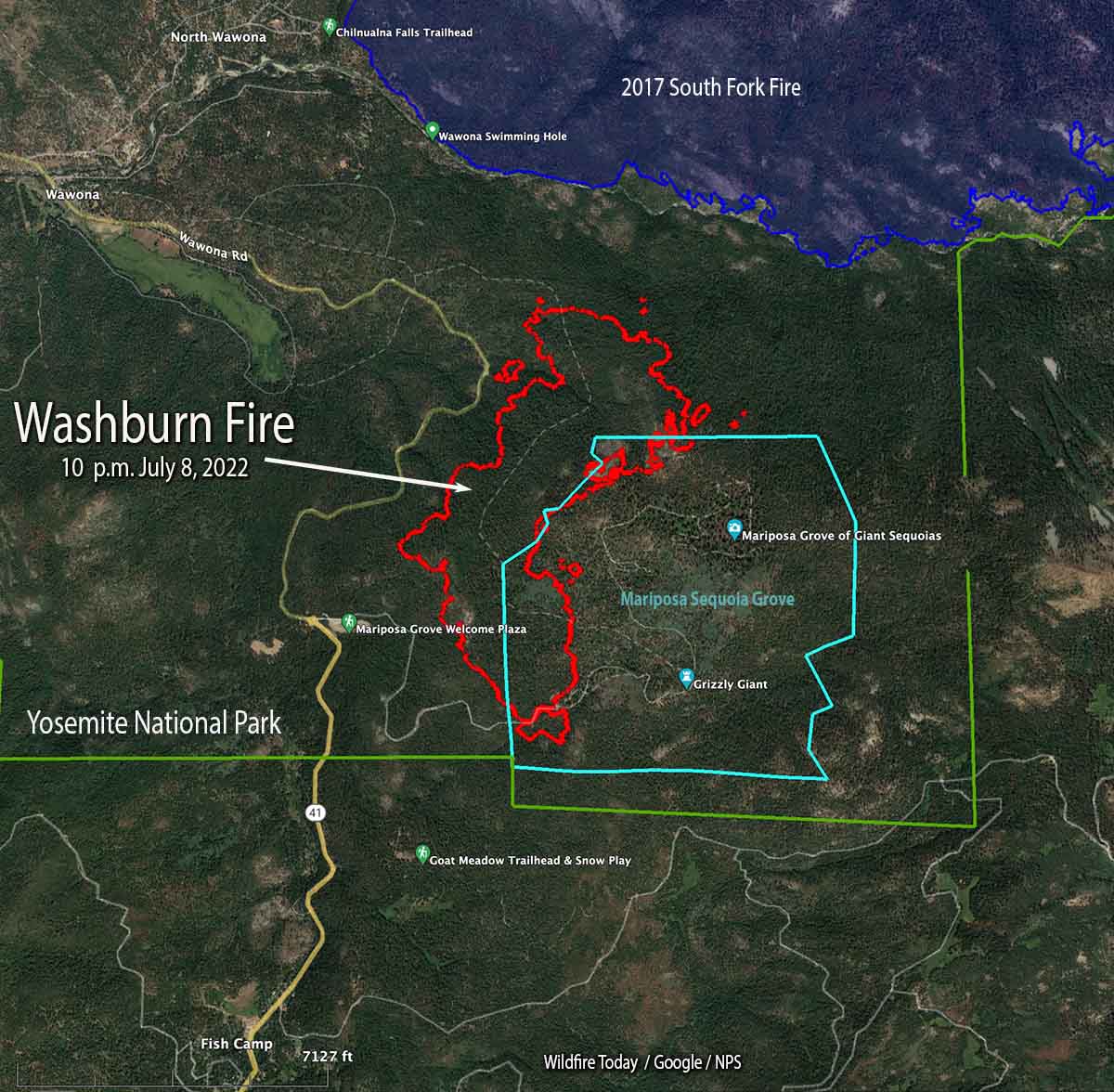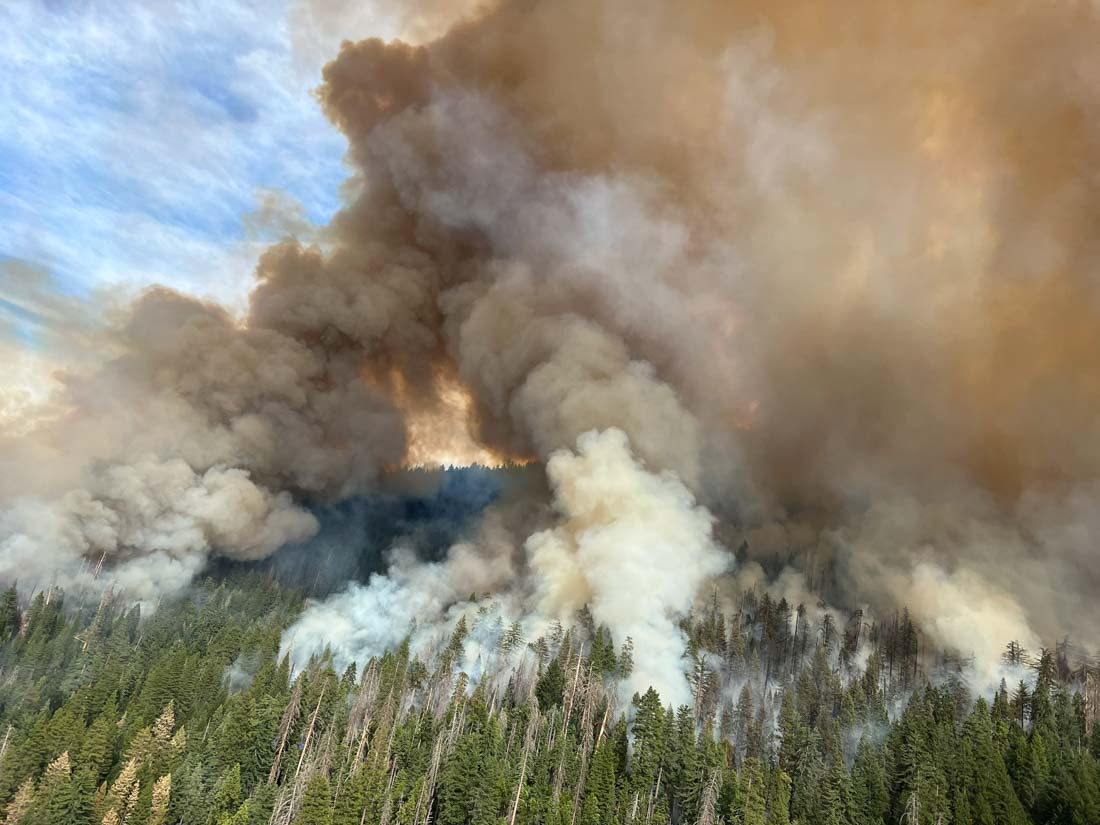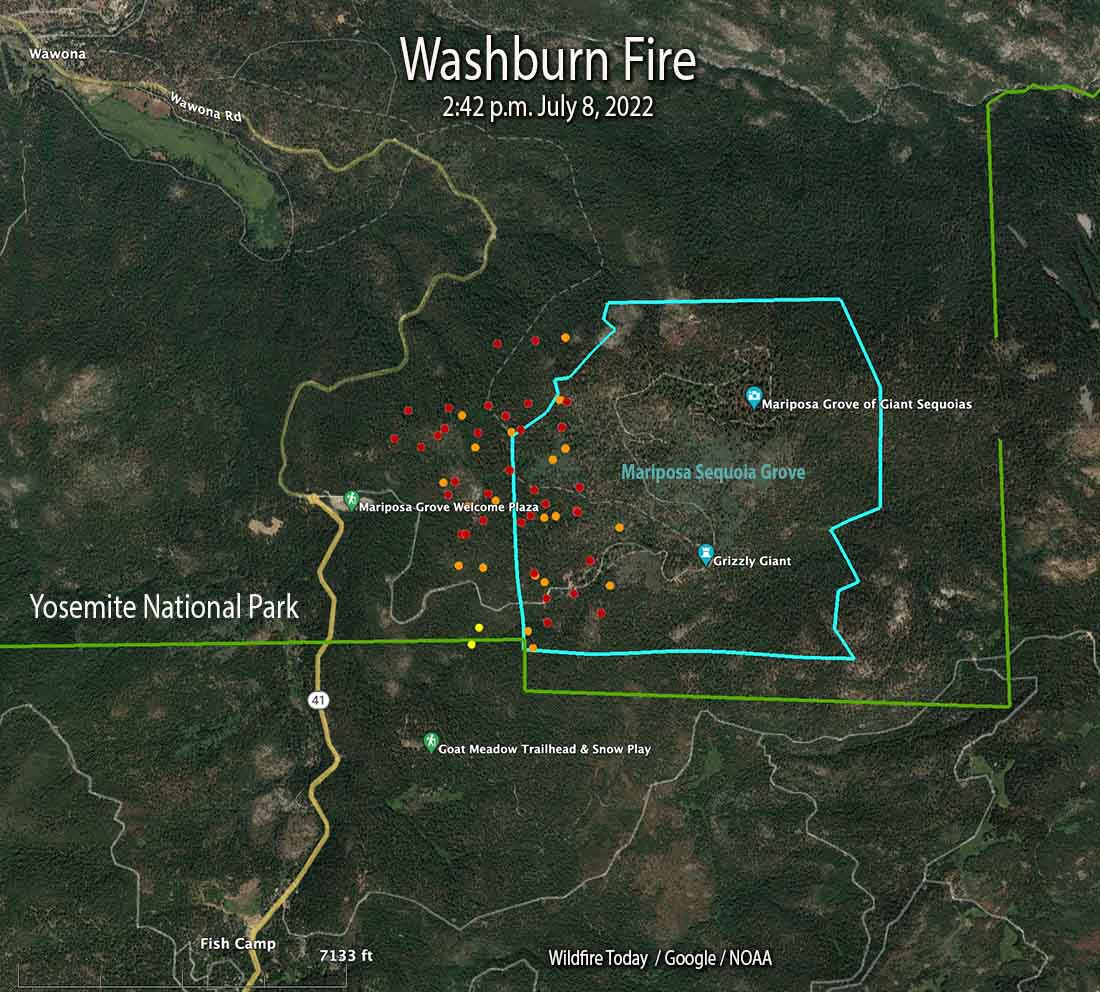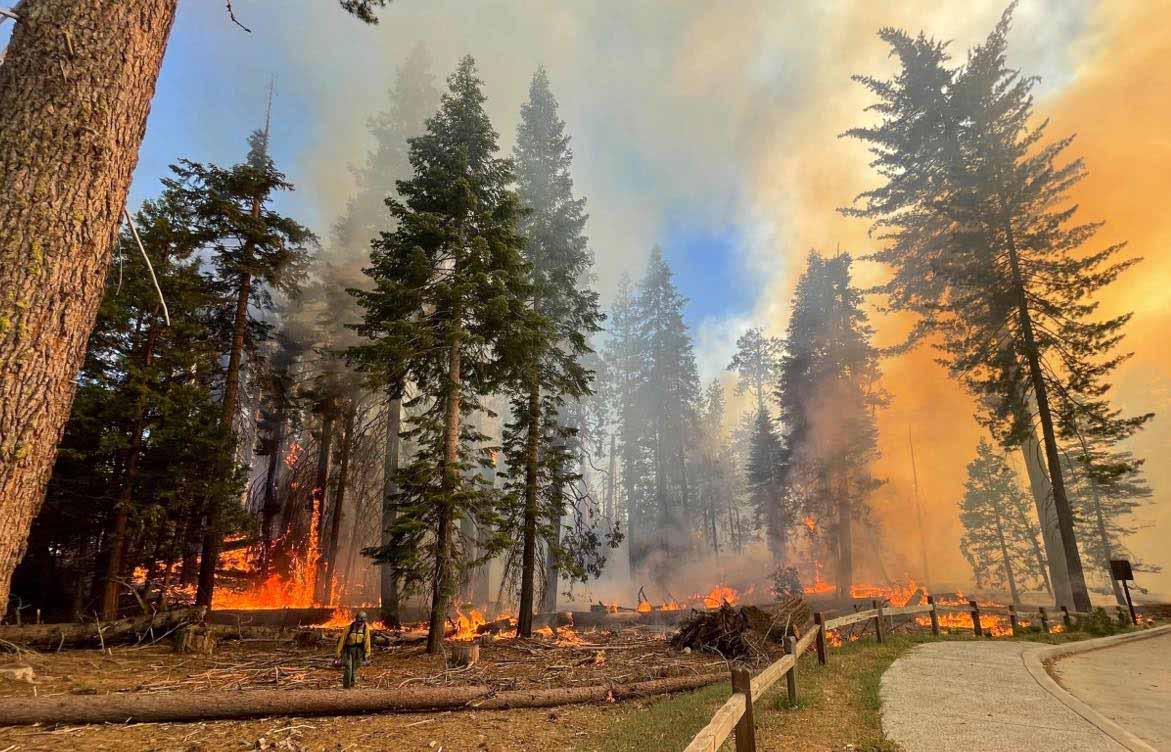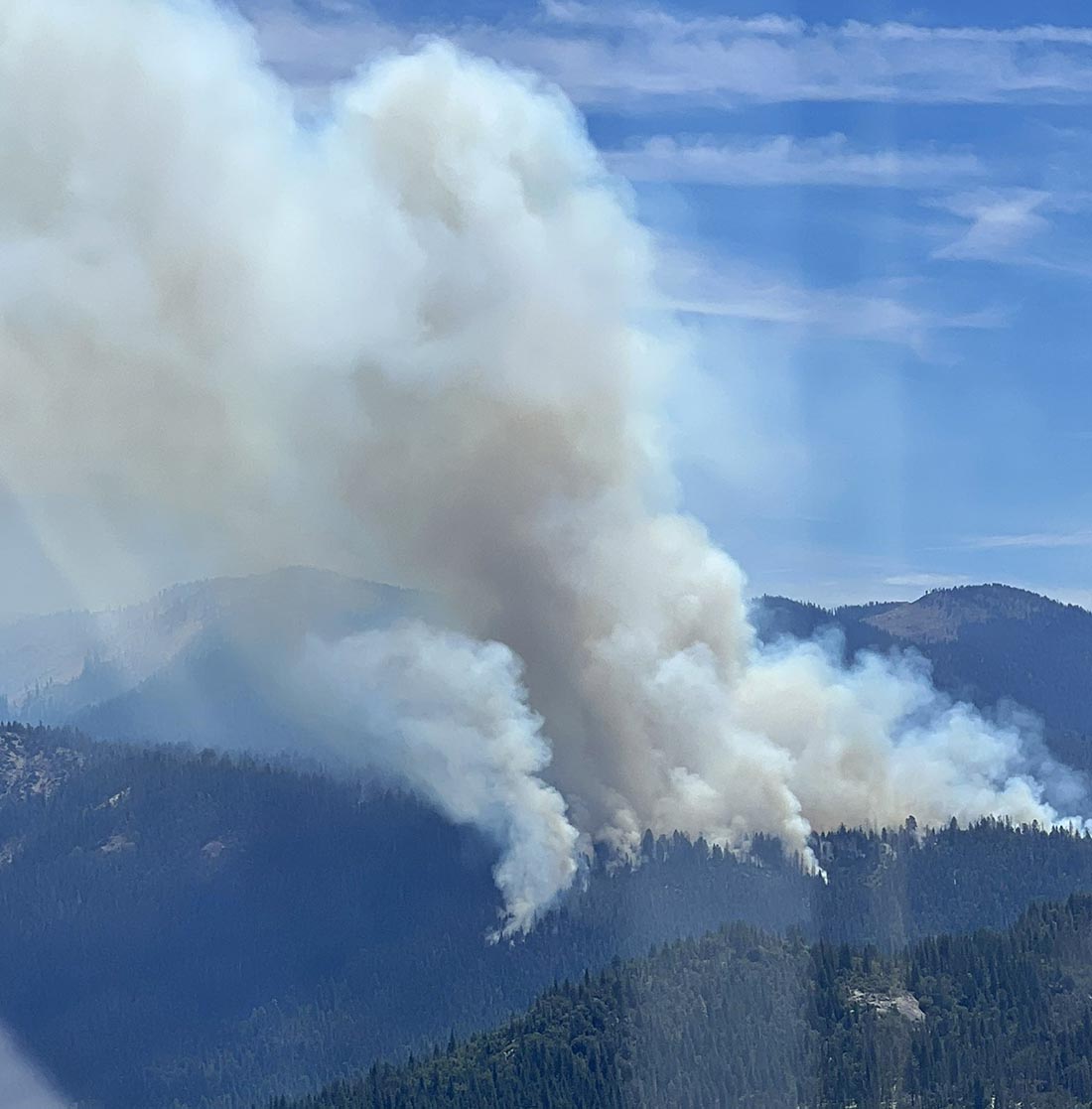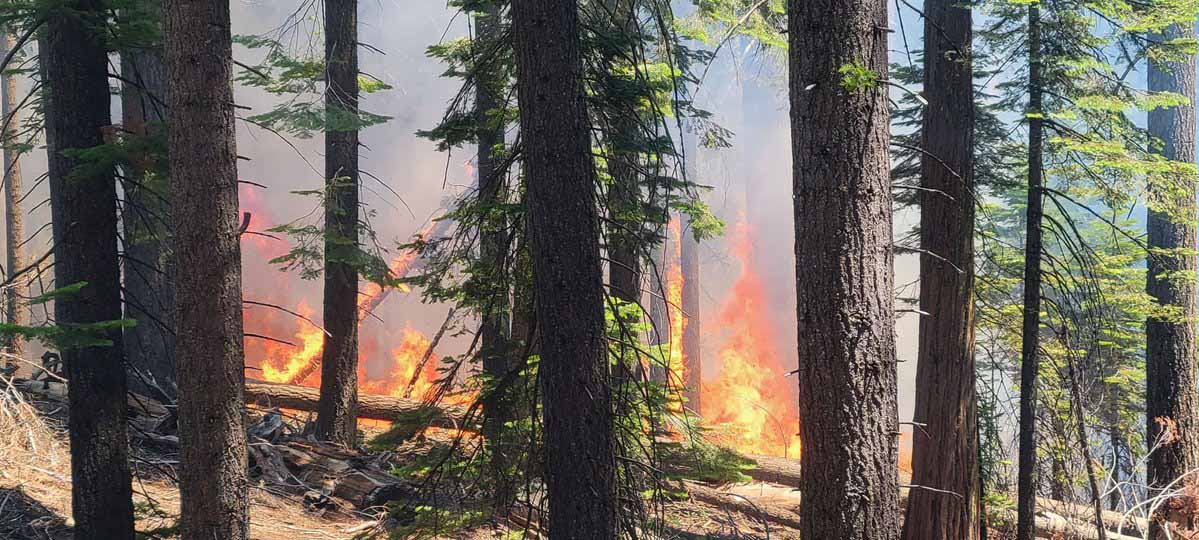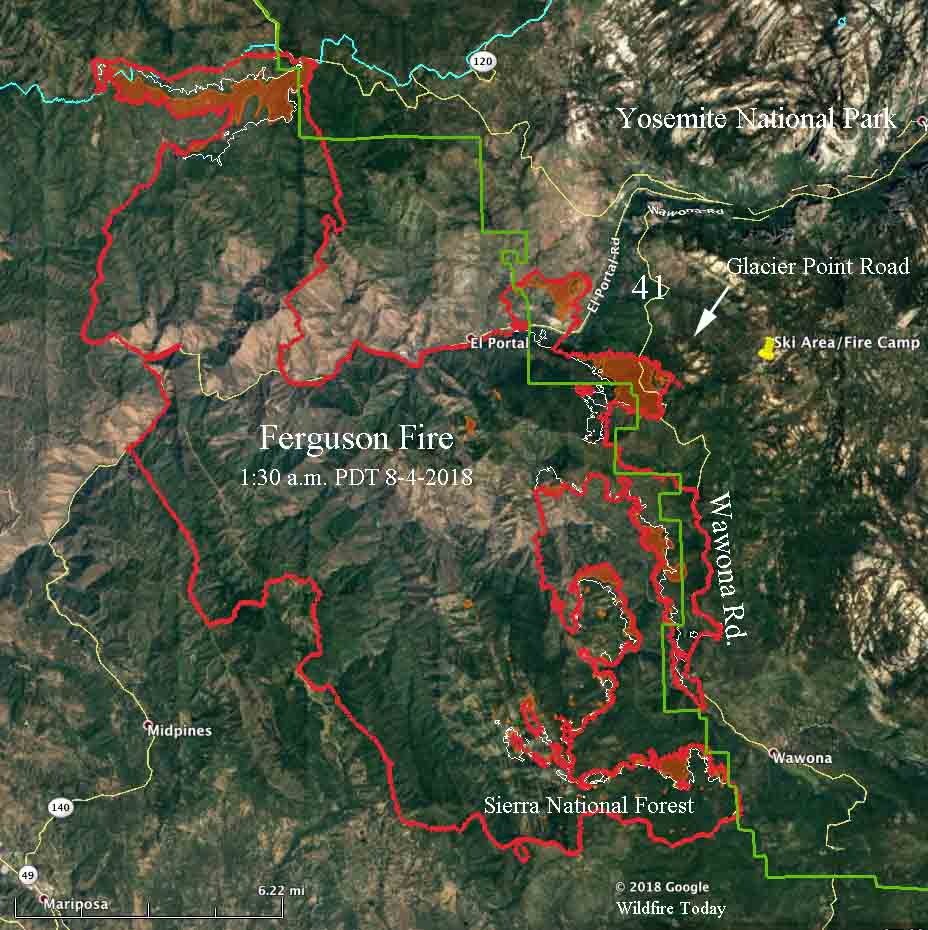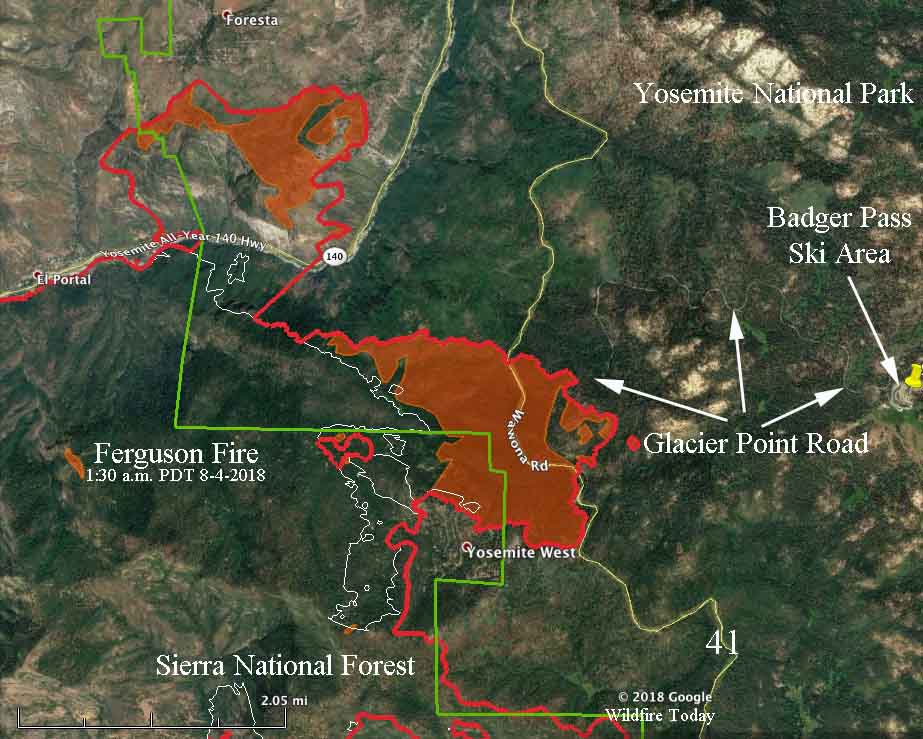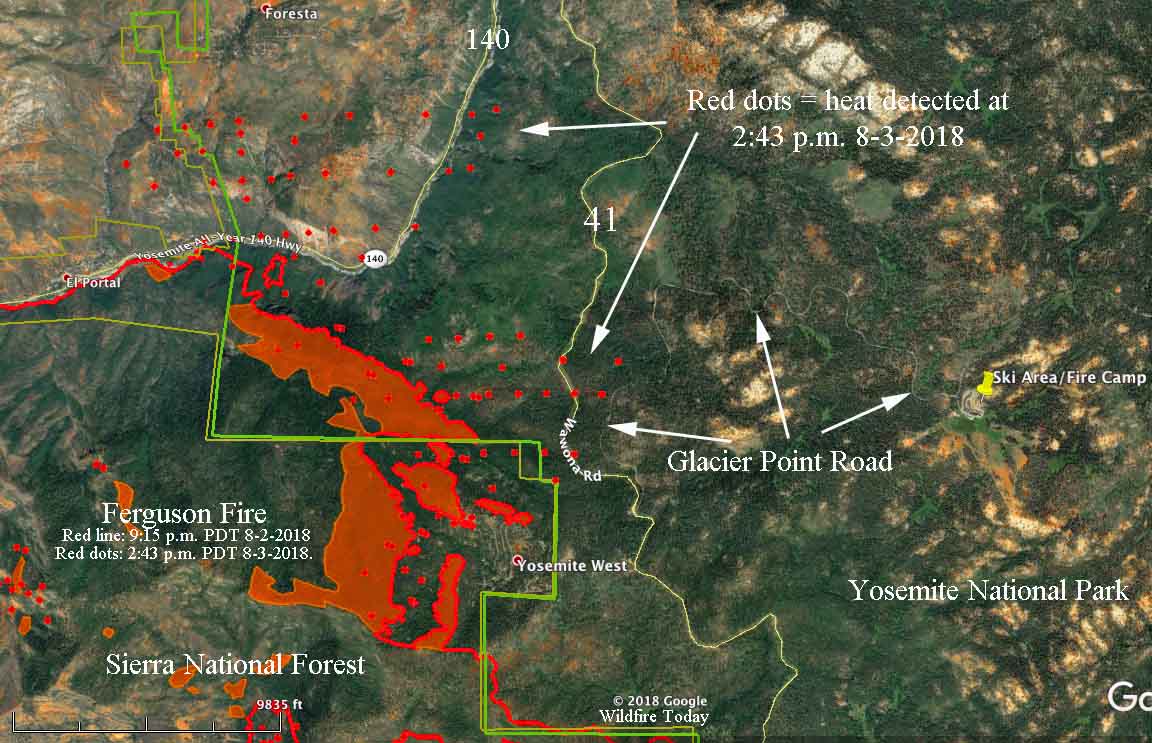Updated 5:08 p.m. PDT July 11, 2022
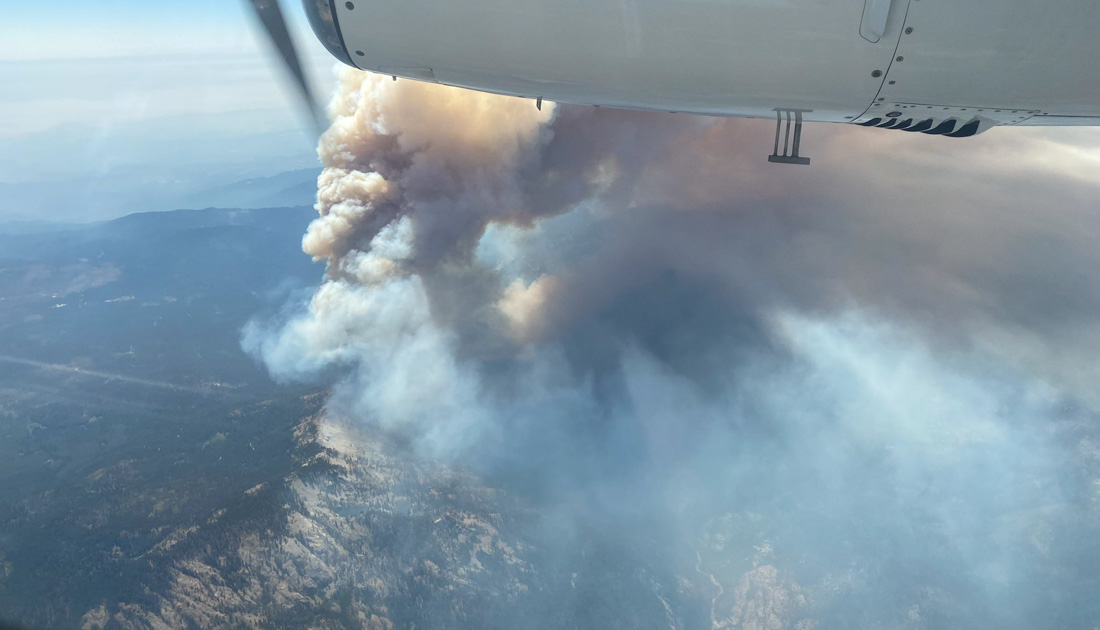
Late Monday afternoon activity on the Washburn Fire increased substantially. There have been reports of at least one spot fire on the north side of the South Fork of the Merced River. There were also reports of spot fires across highway 41 on the west or northwest side of the fire.
Satellite heat detections at 2:36 p.m. Monday showed numerous heat sources east of the earlier perimeter of the fire across the park boundary on the Sierra National Forest, and on the northwest side of the fire between Highway 41 and the river.
In mid-afternoon the FIRIS aircraft mapped the fire at 2,720 acres.

Updated 7:11 a.m. PDT July 11, 2022
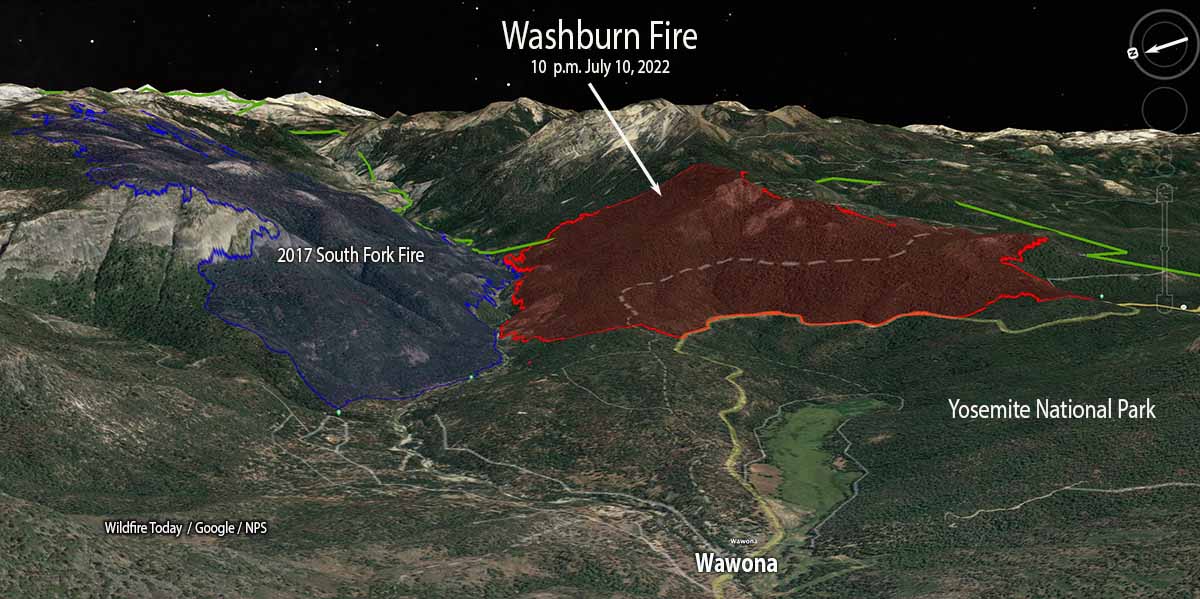
The Washburn Fire in Yosemite National Park in California continued to spread west, north, and east on Sunday. On Saturday and Sunday the size increased by 749 acres, bringing the total to 2,340 acres according to a mapping flight Sunday at 10 p.m.
Approximately 340 acres of the fire are within the Mariposa Grove of giant sequoias. While protective foil-based structure wrap is not being used on the sequoias themselves, additional methods are being employed including the removal of fuels around the trees, and ground-based sprinkler systems to increase humidity and fuel moisture near the sequoias. The Mariposa Grove has a long history of prescribed burning and studies have shown that these efforts reduce the impacts of high-severity fire.

Firefighters are constructing direct fireline on the fire edge where possible, but are also using tactical firing to tie it in with barriers, such as Highway 41 on the west side.
Evacuations are in effect in the Wawona area. A map is available showing the locations. The Wawona Road (Highway 41) is closed from the South Entrance to Henness Ridge Road. Yosemite West remains accessible from the northern side of the Wawona road.

The weather forecast for the fire area (6,400 feet above sea level) predicts for Monday and Tuesday 81 degrees, 3 to 8 mph west and southwest winds, relative humidity in the low to mid-20s, partly cloudy skies, and no chance of rain.
Updated 5:34 p.m. PDT July 10, 2022
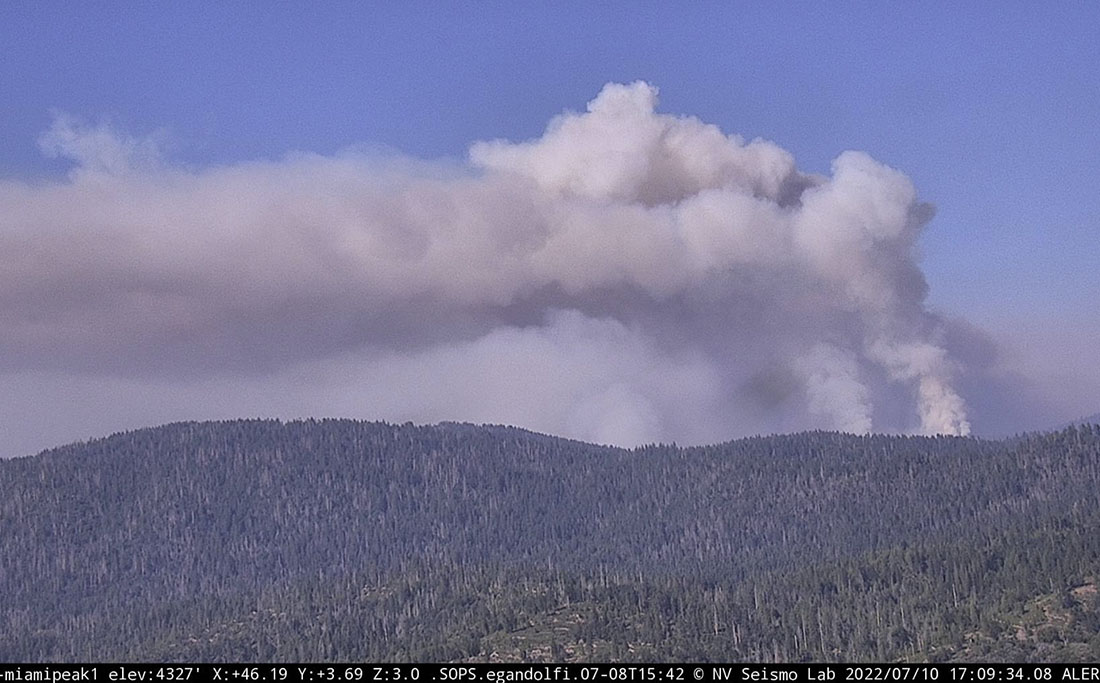
The Washburn Fire, part of which is burning in a grove of giant sequoias in Yosemite National Park, has grown to 2,045 acres, according to a mapping flight at about 4 p.m. Saturday. Most of the additional acres are on the north and east sides. It spread closer to the South Fork of the Merced River, but at that time had not crossed. The east side has moved across the county line, from Mariposa into Madera county.

Three large air tankers and a very large air tanker dropped retardant along a ridge in mid-afternoon, pretreating it in anticipation that when the fire reaches that location the spread will be slowed or stopped.
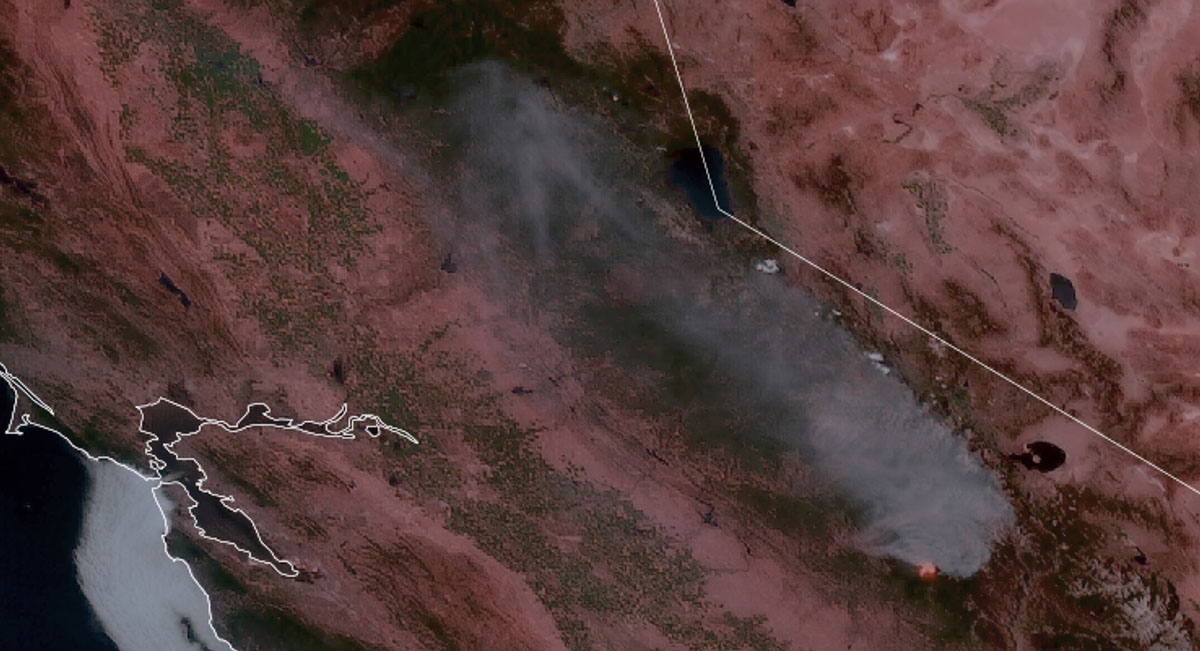
Late in the afternoon the fire activity increased substantially, sending up a substantial smoke column which was blown off to the north.
9:11 a.m. PDT July 10, 2022
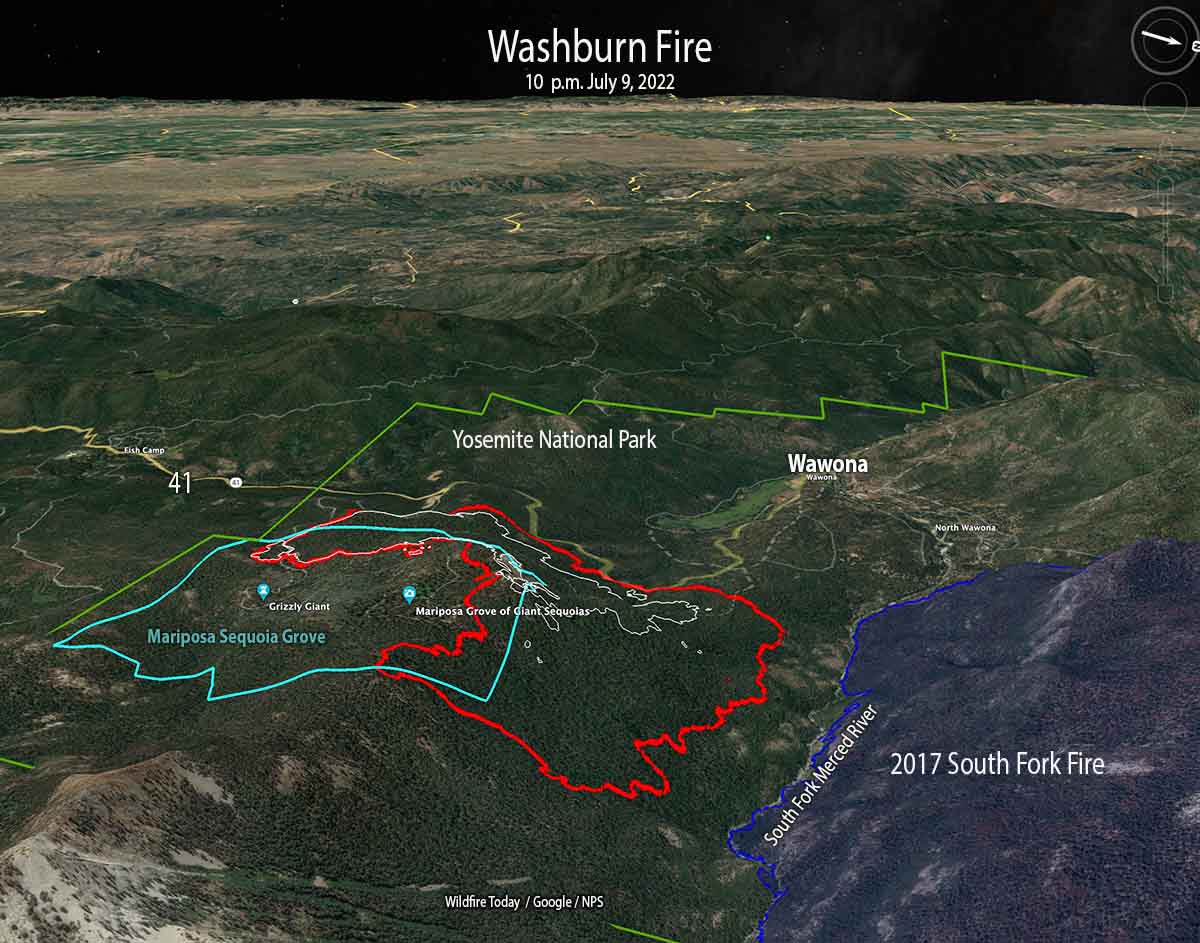
With very little wind Saturday, the Washburn Fire continued to spread in and adjacent to the Mariposa grove of giant sequoia trees in Yosemite National Park in California. In spite of the relatively mild weather conditions, spot fires are occurring hundreds of feet out in front of the leading edge. The growth into the grove has been limited due to previous prescribed fires that reduced the amount of fuel on the ground, and by the efforts of firefighters. Some of the trees are about 3,000 years old.
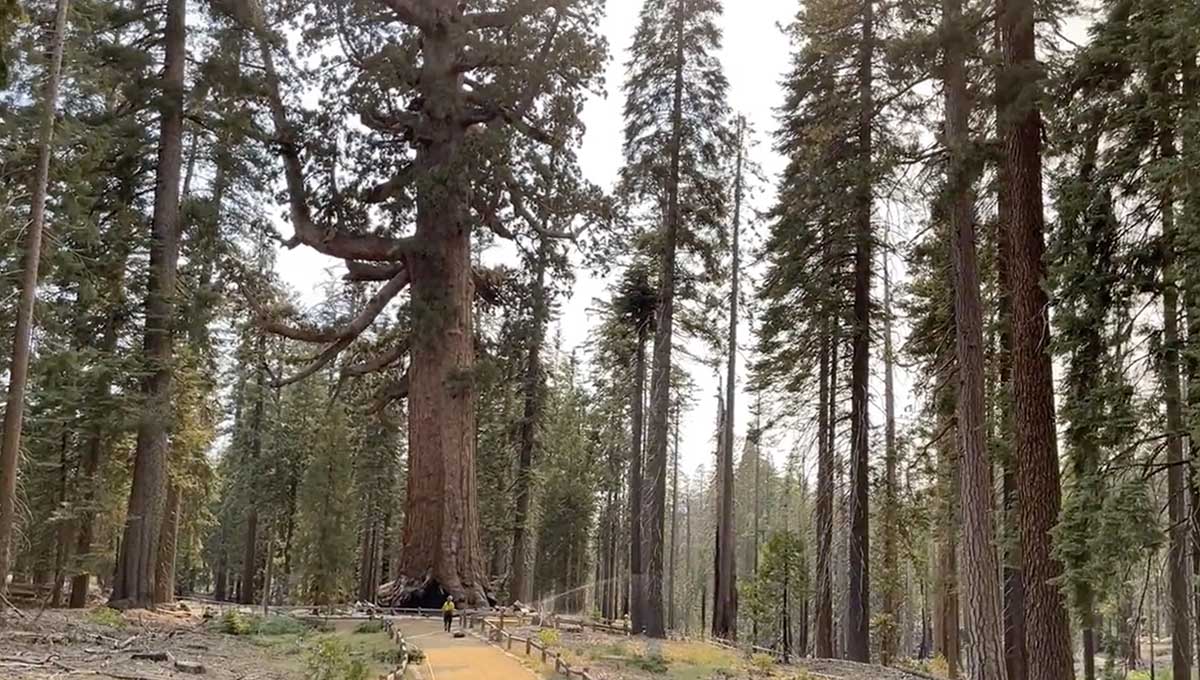
While the huge, very old trees are adapted to fire, they are not prepared for human caused climate change and the current “exceptional drought” conditions that have led to low soil and fuel moistures. The monster trees are more vulnerable to the existing weather and fuel conditions. They only grow in about 70 groves located on the western slopes of California’s Sierra Nevada Mountains. They are the largest trees on Earth in terms of volume.
The fire was mapped Friday night at 1,591 acres. Approximately 300 acres are in the Mariposa Grove of giant sequoias, on the west and north sides.
Smoke at times on Saturday degraded visibility to the point where retardant-dropping aircraft were grounded. Most of the movement of the fire was on the north end where it is working its way down-slope to the South Fork of the Merced River, which is also the southern edge of the South Fork Fire that burned 7,563 acres in 2017. The footprint of that 5-year-old fire scar will not stop the fire by itself, but there will be less resistance to control as it spreads through the lighter fuels.
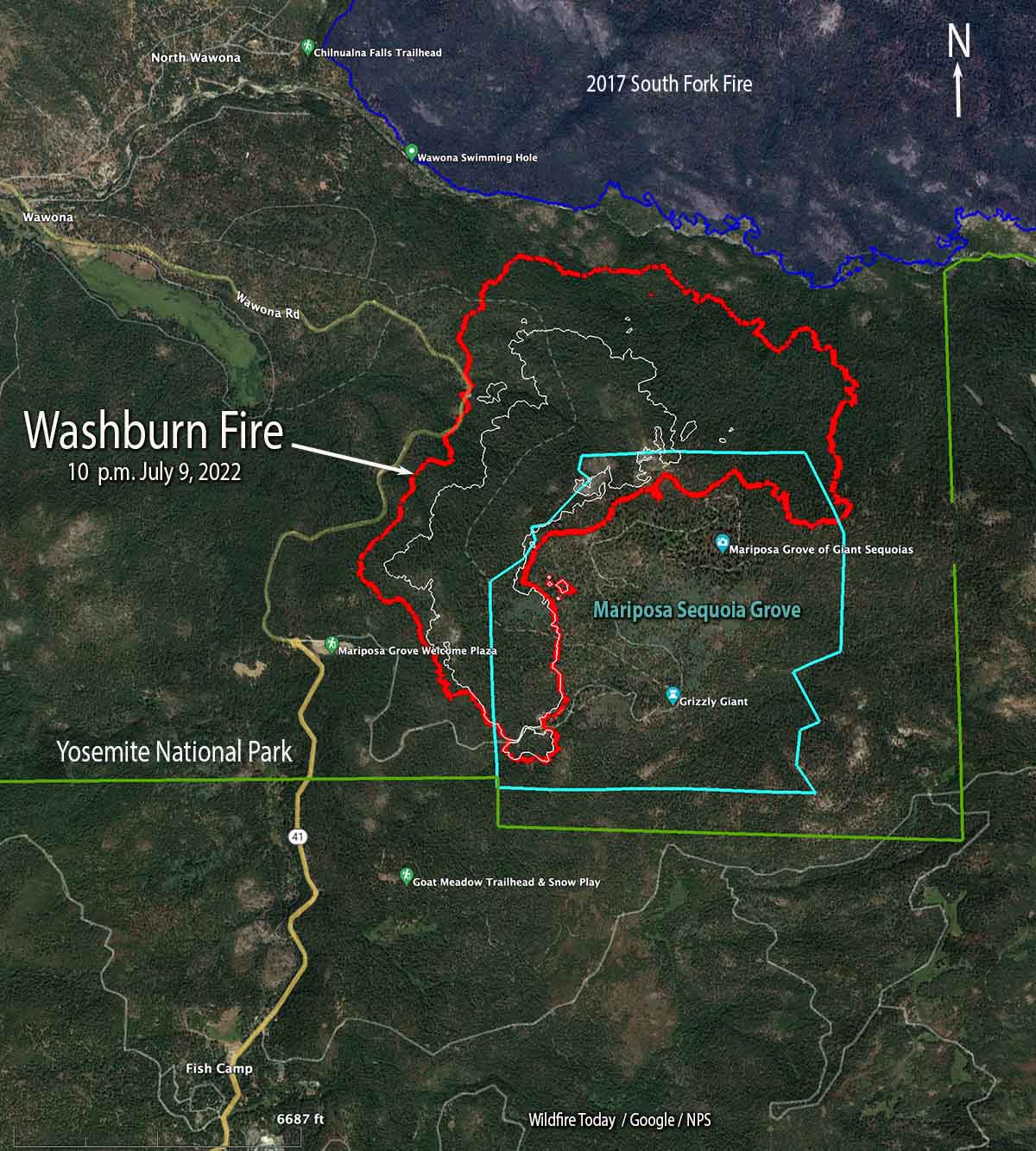
The Washburn Fire is burning in mostly high load conifer litter with a heavy dead and down component as well as numerous standing dead trees.
There was very little wind on the fire Saturday and none overnight at Fish Camp, south of the fire and 1,000 feet lower where the minimum humidity Saturday was 31 percent but rose to 83 percent by 7:31 a.m. Sunday. Warmer and drier weather is predicted for the next few days.
The weather forecast for the fire area on Sunday calls for temperature around 80, relative humidity 26 percent, and ridgetop winds out of the west at 5 mph gusting to 12 mph in the afternoon. For Sunday night, 66 degrees, 33 percent RH, and 5 to 10 mph northwest winds in the evening shifting to east after 9 p.m. Monday should bring 83 degrees, 20 percent RH, and 5 to 10 mph winds out of the southeast shifting to southwest by 11 a.m.
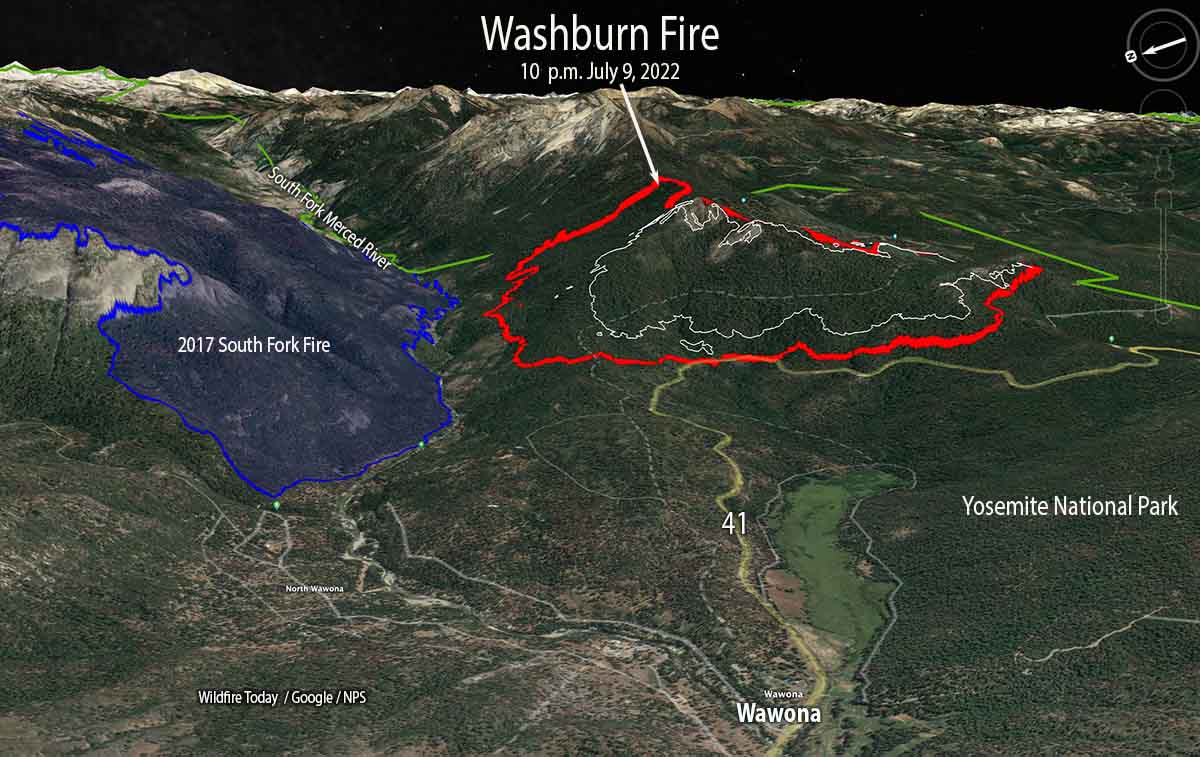
Preparing for fire: The Grizzly Giant is the most renowned giant sequoia in Yosemite National Park. Standing at 209 feet it is the second largest tree in the Yosemite, and one of the most photographed.The Grizzly Giant is in the Mariposa Grove impacted by the Washburn Fire. pic.twitter.com/jnIlm9Gemn
— Yosemite Fire and Aviation Management (@YosemiteFire) July 10, 2022

